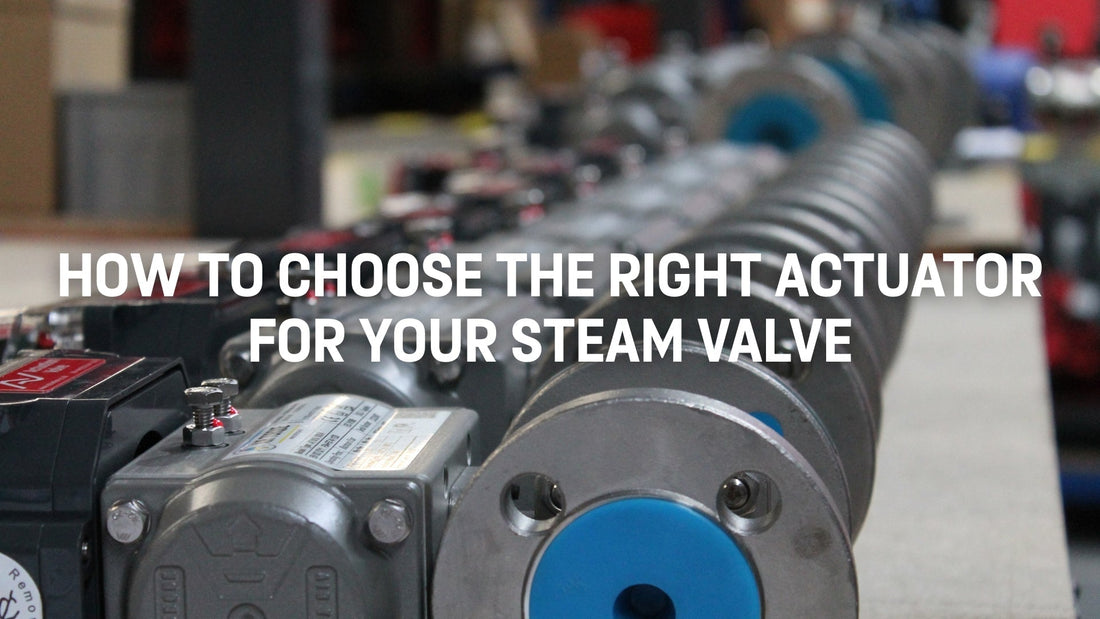
How to Choose the Right Actuator for Your Steam Valve
Share
✅ Key Points
-
Learn the key factors when selecting a valve actuator for steam
-
Understand the differences between electric and pneumatic actuation
-
Match actuator performance to temperature, pressure & safety needs
-
Ideal for plant managers, engineers, and specifiers in steam systems
Choosing the correct actuator for your steam valve isn’t just a matter of fit—it’s about ensuring safe, efficient control under high temperatures and pressures. With so many options available, it’s crucial to understand what makes an actuator suitable for steam service. At Steam Valves UK, we specialise in providing tailored actuation solutions for the most demanding steam applications.
1. 🔥 Consider Temperature and Pressure Ratings
Steam systems often run at extreme temperatures and pressures, so you need an actuator that can cope. High ambient heat or radiant heat from nearby pipework can damage unprotected actuators.
Tip: Use actuators with heat-resistant builds, or install mounting brackets with stem extensions to protect the actuator from direct heat. Brands like V-Tork and Valpes offer robust options for these environments.
2. ⚙️ Electric vs Pneumatic Actuation
-
Best for slow, precise modulation
-
Require electrical infrastructure
-
Ideal for indoor installations with consistent temperatures
-
Fast, reliable, and suitable for on/off control
-
Handle high temperatures better with less electronic risk
-
Often preferred in plant rooms or high-moisture environments
Tip: For steam, pneumatic actuators are usually the go-to for on/off applications due to their simplicity and durability in extreme conditions. For control valves, consider electric or electro-pneumatic systems for fine-tuned adjustments.
3. 🧰 Match the Actuator to the Valve Type
Different valves require different torque or thrust outputs. A butterfly valve, for example, needs rotary motion, while a globe valve may require linear actuation.
Tip: Always confirm torque requirements, fail-safe positions, and modulating needs. We supply AV Actuators, Samson Positioners, and custom-mounting solutions to ensure the perfect fit every time.
4. 🔐 Fail-Safe and Control Options
In a steam system, safety is everything. Depending on the process, you might need a fail-open, fail-closed, or stay-put actuator. Choosing the right fail-safe mode protects your system in the event of power loss or emergency.
Tip: Spring-return pneumatic actuators and battery-backed electric actuators offer enhanced safety for steam-critical applications.
5. 🔧 Don’t Forget Accessories and Mounting Kits
An actuator is only as good as the components that connect it to the valve. Steam systems often require ISO mounting kits, couplings, or drive shaft adapters due to thermal expansion and alignment challenges.
Tip: Our team at SteamValves.co.uk can supply fully built and tested actuated valve packages, saving you time and ensuring peace of mind.
Final Thoughts 💬
Selecting the right actuator for your steam valve comes down to performance, protection, and precision. With decades of experience and access to industry-leading brands, Steam Valves UK is your trusted partner in actuation.
💡 Need help choosing? Contact our technical team for fast support and same-day dispatch on in-stock actuated valves.
Explore our full range at steamvalves.co.uk – engineered for steam, built to last.
